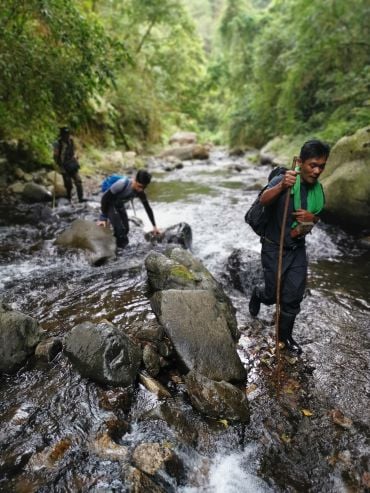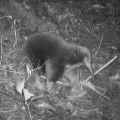
Botanists name a beautiful new species of ‘lipstick vine’ discovered in the Philippine rainforest
A team of botanists, from Oxford University and the University of the Philippines Los Baños, have announced the discovery of a species of lipstick vine completely new to science, from the depths of the Philippine rainforest. The findings have been published in the Nordic Journal of Botany.
Suddenly we spotted a luminous white, purple-spotted flower dangling above our heads. We suspected immediately that it was new to science. It’s so exciting that beautiful species like this are still there waiting to be described.
Dr Chris Thorogood, Oxford Botanic Garden and Arboretum and Department of Biology
The group made the discovery during an expedition to the remote Barangay Balbalasang rainforest on the island of Luzon in 2022. This almost impenetrable wilderness takes days to reach and has to be hacked through by a machete. The team stayed with the Banao Tribe, an indigenous community who protect their local forest.
Examining the material they collected from the trips, botanists Jayson Mansibang, Adriane Tobias, Pastor Malabrigo Jr (University of the Philippines Los Baños) and Dr Chris Thorogood (Deputy Director and Head of Science for Oxford Botanic Garden and Arboretum and lecturer at Oxford University’s Department of Biology) realised they had stumbled upon a specimen unlike any related type of lipstick vine known to date. In particular, the plant’s flowers have a distinct pattern of delicate purple mottling, similar to that of a European foxglove.
Dr Chris Thorogood said, ‘We were trekking through dense vegetation when suddenly we spotted a luminous white, purple-spotted flower dangling above our heads. We suspected immediately that it was new to science. It’s so exciting that beautiful species like this are still there waiting to be described.’
Together, the scientists named the plant Aeschynanthus pentatrichomatus from the Latin “penta” meaning five and “trichomatus” referring to the trichomes – hair-like outgrowths deep in the throats of the flowers.

The new species has already been assessed as Critically Endangered, since the population is at high risk of total forest destruction due to the growing intensity of typhoons caused by climate change. The Barangay Balbalasang rainforest is remarkably intact and hosts a high number of species not found anywhere else in the world. The researchers hope that the new discovery can help support conservation efforts to protect the region.
Adriane Tobias, from the University of the Philippines Los Baños, said: ‘We dedicate this discovery not only to the unique beauty of the Banao forest but also to the Banao People themselves, who, through their care and stewardship, have ensured the conservation of rare species within these precious forests. It’s rare to find Aeschynanthus in such an environment, and as young botanists, we were thrilled to discover something so distinct.’
Dr Thorogood added: ‘Many new species remain undocumented in the world’s “plant data darkspots” – up to 15% of the world’s flora in fact. Finding these “known unknowns” is essential for understanding and protecting biodiversity. That’s what makes discoveries such as this one so important for conservation science.’
The study ‘Aeschynanthus pentatrichomatus (Gesneriaceae), a new species of lipstick vine from the Banao Protected Landscape of Luzon Island in the Philippines’ has been published in the Nordic Journal of Botany.
 Oxford launches first human aerosol TB challenge trial
Oxford launches first human aerosol TB challenge trial
 Rees Centre report reveals challenges faced by Black and Asian kinship carers
Rees Centre report reveals challenges faced by Black and Asian kinship carers
 Expert Comment: The Modern Slavery Act at 10 – what have we learnt for human rights?
Expert Comment: The Modern Slavery Act at 10 – what have we learnt for human rights?
 New study reveals the explosive secret of the squirting cucumber
New study reveals the explosive secret of the squirting cucumber
 Ethiopian wolves reported to feed on nectar for the first time
Ethiopian wolves reported to feed on nectar for the first time
 Found at last: bizarre, egg-laying mammal finally rediscovered after 60 years
Found at last: bizarre, egg-laying mammal finally rediscovered after 60 years